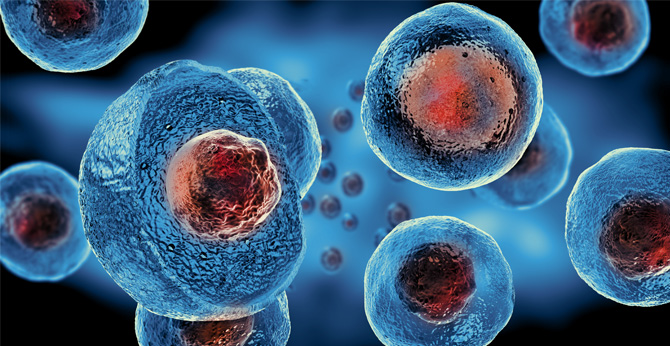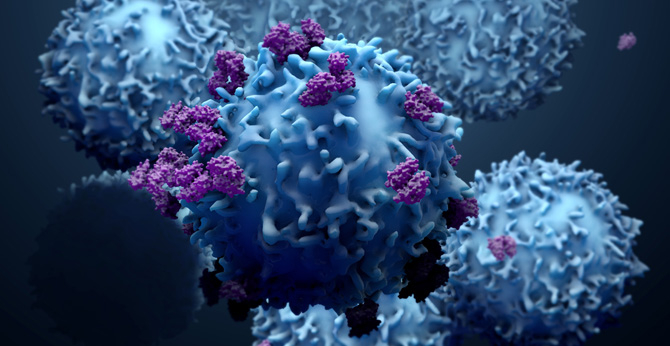All products and services are For Research Use Only and CANNOT be used in the treatment or diagnosis of disease.
This gene encodes a member of the cysteine-aspartic acid protease (caspase) family. Sequential activation of caspases plays a central role in the execution-phase of cell apoptosis. Caspases exist as inactive proenzymes composed of a prodomain, a large protease subunit, and a small protease subunit. Activation of caspases requires proteolytic processing at conserved internal aspartic residues to generate a heterodimeric enzyme consisting of the large and small subunits. This protein is involved in the programmed cell death induced by Fas and various apoptotic stimuli. The N-terminal FADD-like death effector domain of this protein suggests that it may interact with Fas-interacting protein FADD. This protein was detected in the insoluble fraction of the affected brain region from Huntington disease patients but not in those from normal controls, which implicated the role in neurodegenerative diseases. Many alternatively spliced transcript variants encoding different isoforms have been described, although not all variants have had their full-length sequences determined.
 Loading...
Loading...
| CAT | Product Name | Target Species | Antibody Clone | Antibody Host | Receptor Construction | Vector Type | Targeting Cell Type | CAR Vector Type | Inquiry & Datasheet |
| CAR-CQ0109 | Anti-CASP8 (CBXC-3111) h(41BB-CD3ζ) CAR, pCDCAR1 | Human, Primate | CBXC-3111 | Mouse | scFv-41BB-CD3ζ | Lentiviral vector | T cell | ||
| CAR-CQ0110 | Anti-CASP8 (CBXC-0083) h(41BB-CD3ζ) CAR, pCDCAR1 | Human | CBXC-0083 | Mouse | scFv-41BB-CD3ζ | Lentiviral vector | T cell | ||
| CAR-CQ0111 | Anti-CASP8 (XHM58) h(41BB-CD3ζ) CAR, pCDCAR1 | Human | XHM58 | Mouse | scFv-41BB-CD3ζ | Lentiviral vector | T cell | ||
| CAR-CQ0112 | Anti-CASP8 (CBXC-0084) h(41BB-CD3ζ) CAR, pCDCAR1 | Human | CBXC-0084 | Mouse | scFv-41BB-CD3ζ | Lentiviral vector | T cell | ||
| CAR-CQ0113 | Anti-CASP8 (CBXC-2270) h(41BB-CD3ζ) CAR, pCDCAR1 | Human | CBXC-2270 | Mouse | scFv-41BB-CD3ζ | Lentiviral vector | T cell | ||
| CAR-CQ0114 | Anti-CASP8 (CBXC-0082) h(41BB-CD3ζ) CAR, pCDCAR1 | Human | CBXC-0082 | Mouse | scFv-41BB-CD3ζ | Lentiviral vector | T cell | ||
| CAR-CQ0115 | Anti-CASP8 (CBXC-1334) h(41BB-CD3ζ) CAR, pCDCAR1 | Human | CBXC-1334 | Mouse | scFv-41BB-CD3ζ | Lentiviral vector | T cell | ||
| CAR-CQ0116 | Anti-CASP8 (FLICE 4-1-20) h(41BB-CD3ζ) CAR, pCDCAR1 | Human | FLICE 4-1-20 | Mouse | scFv-41BB-CD3ζ | Lentiviral vector | T cell | ||
| CAR-CQ3533 | Anti-CASP8 (CBXC-3111) h(CD28-CD3ζ) CAR, pCDCAR1 | Human, Primate | CBXC-3111 | Mouse | scFv-CD28-CD3ζ | Lentiviral vector | T cell | ||
| CAR-CQ3534 | Anti-CASP8 (CBXC-0083) h(CD28-CD3ζ) CAR, pCDCAR1 | Human | CBXC-0083 | Mouse | scFv-CD28-CD3ζ | Lentiviral vector | T cell | ||
| CAR-CQ3535 | Anti-CASP8 (XHM58) h(CD28-CD3ζ) CAR, pCDCAR1 | Human | XHM58 | Mouse | scFv-CD28-CD3ζ | Lentiviral vector | T cell | ||
| CAR-CQ3536 | Anti-CASP8 (CBXC-0084) h(CD28-CD3ζ) CAR, pCDCAR1 | Human | CBXC-0084 | Mouse | scFv-CD28-CD3ζ | Lentiviral vector | T cell | ||
| CAR-CQ3537 | Anti-CASP8 (CBXC-2270) h(CD28-CD3ζ) CAR, pCDCAR1 | Human | CBXC-2270 | Mouse | scFv-CD28-CD3ζ | Lentiviral vector | T cell | ||
| CAR-CQ3538 | Anti-CASP8 (CBXC-0082) h(CD28-CD3ζ) CAR, pCDCAR1 | Human | CBXC-0082 | Mouse | scFv-CD28-CD3ζ | Lentiviral vector | T cell | ||
| CAR-CQ3539 | Anti-CASP8 (CBXC-1334) h(CD28-CD3ζ) CAR, pCDCAR1 | Human | CBXC-1334 | Mouse | scFv-CD28-CD3ζ | Lentiviral vector | T cell | ||
| CAR-CQ3540 | Anti-CASP8 (FLICE 4-1-20) h(CD28-CD3ζ) CAR, pCDCAR1 | Human | FLICE 4-1-20 | Mouse | scFv-CD28-CD3ζ | Lentiviral vector | T cell | ||
| CAR-WFY2661 | Anti-CASP8 (CBFYC-0853) h(41BB-CD3ζ) CAR, pCDCAR1 | Human | CBFYC-0853 | Mouse | scFv-41BB-CD3ζ | Lentiviral vector | T cell | ||
| CAR-WFY2662 | Anti-CASP8 (CBFYC-0854) h(41BB-CD3ζ) CAR, pCDCAR1 | Mouse | CBFYC-0854 | Rat | scFv-41BB-CD3ζ | Lentiviral vector | T cell | ||
| CAR-WFY2663 | Anti-CASP8 (CBFYC-0855) h(41BB-CD3ζ) CAR, pCDCAR1 | Human | CBFYC-0855 | Mouse | scFv-41BB-CD3ζ | Lentiviral vector | T cell | ||
| CAR-WFY2664 | Anti-CASP8 (CBFYC-0856) h(41BB-CD3ζ) CAR, pCDCAR1 | Human, Mouse, Rat | CBFYC-0856 | Mouse | scFv-41BB-CD3ζ | Lentiviral vector | T cell |
 NEWSLETTER
NEWSLETTER
The latest newsletter to introduce the latest breaking information, our site updates, field and other scientific news, important events, and insights from industry leaders
LEARN MORE NEWSLETTER NEW SOLUTION
NEW SOLUTION
CellRapeutics™ In Vivo Cell Engineering: One-stop in vivo T/B/NK cell and macrophage engineering services covering vectors construction to function verification.
LEARN MORE SOLUTION NOVEL TECHNOLOGY
NOVEL TECHNOLOGY
Silence™ CAR-T Cell: A novel platform to enhance CAR-T cell immunotherapy by combining RNAi technology to suppress genes that may impede CAR functionality.
LEARN MORE NOVEL TECHNOLOGY NEW SOLUTION
NEW SOLUTION
Canine CAR-T Therapy Development: From early target discovery, CAR design and construction, cell culture, and transfection, to in vitro and in vivo function validation.
LEARN MORE SOLUTION

